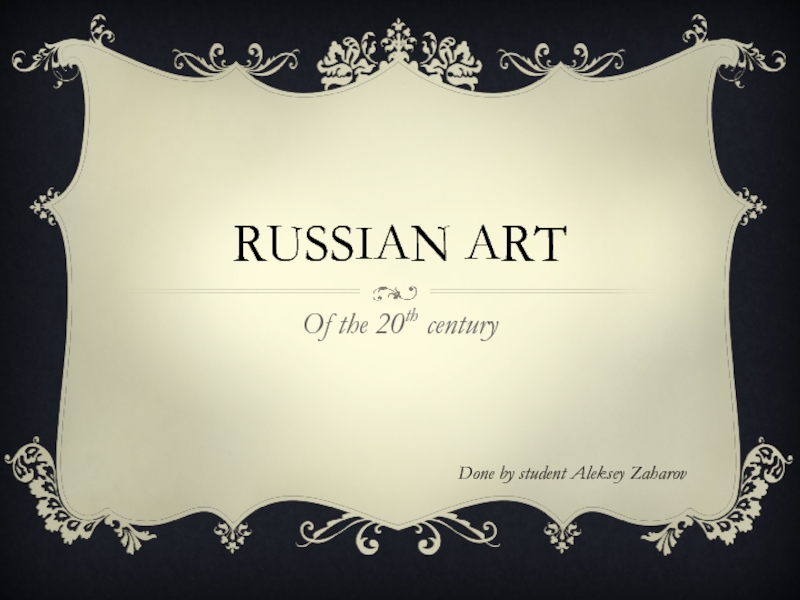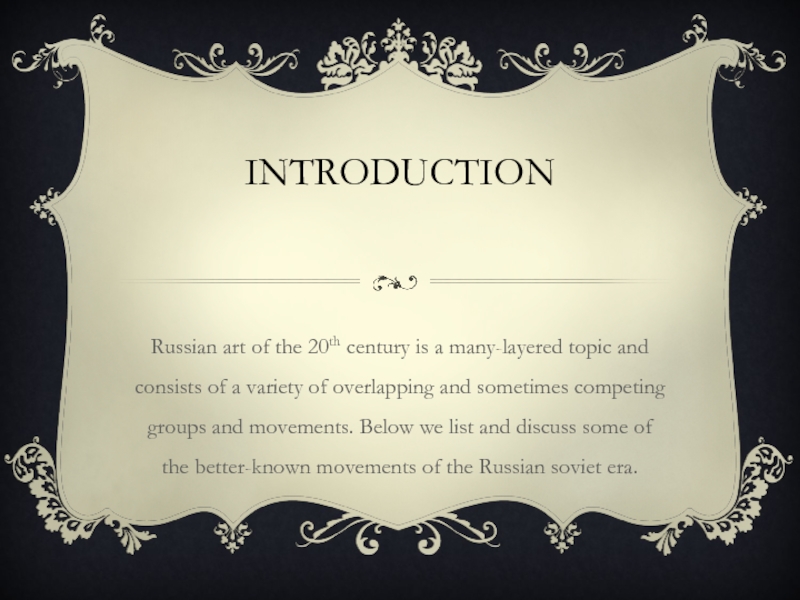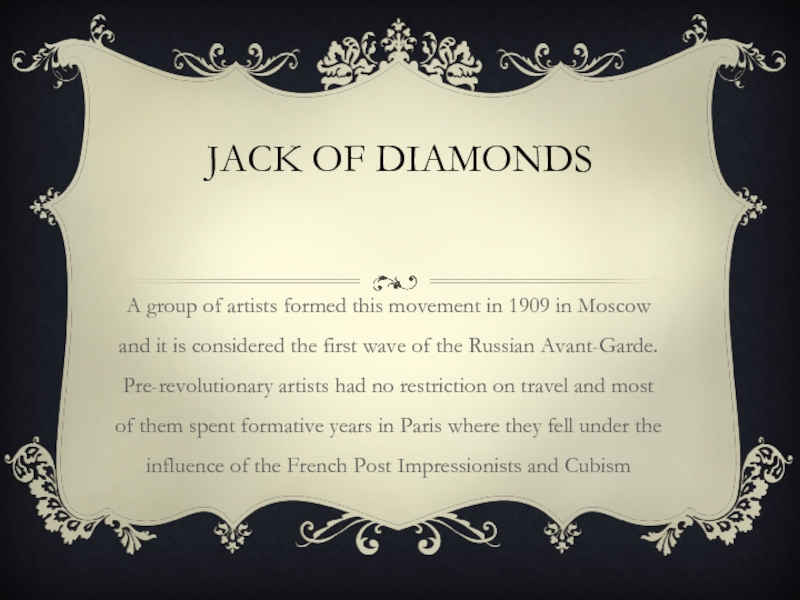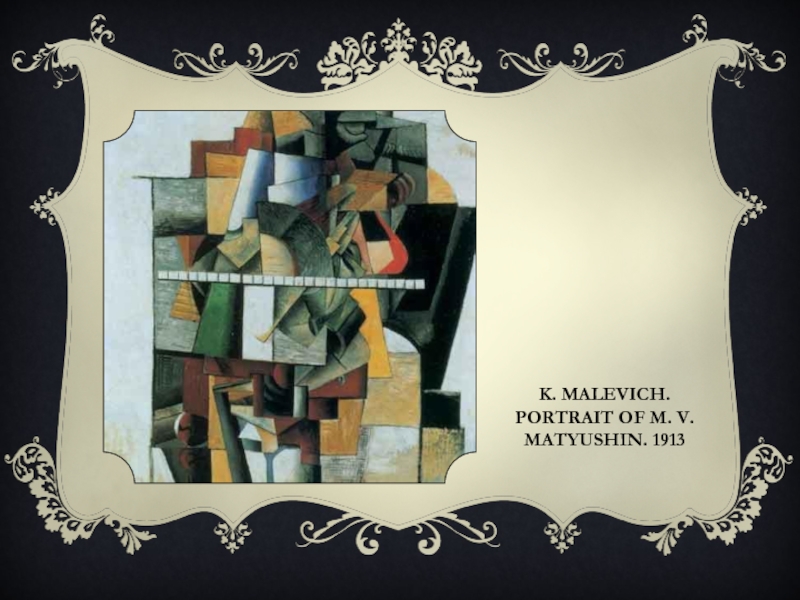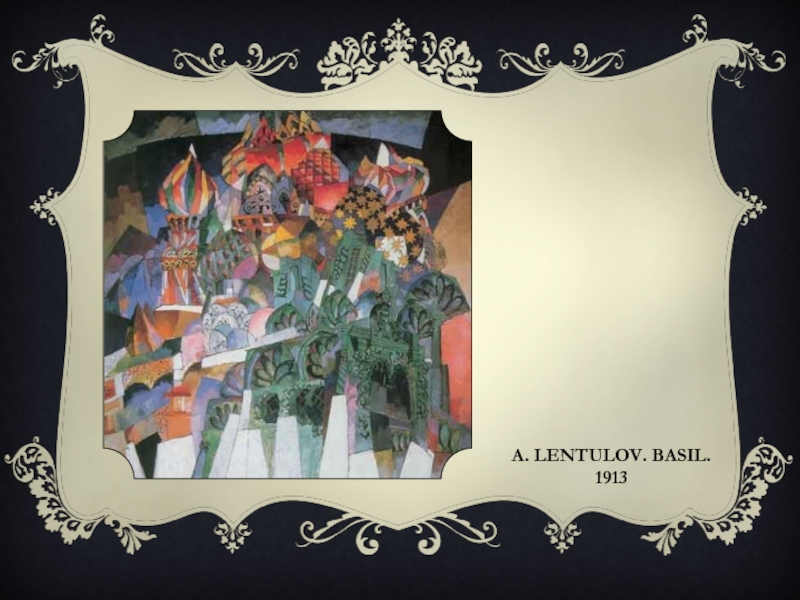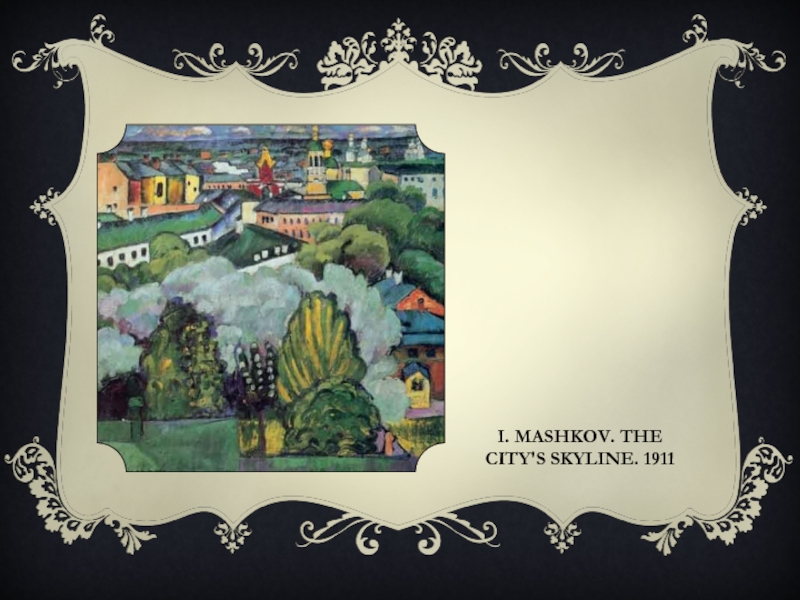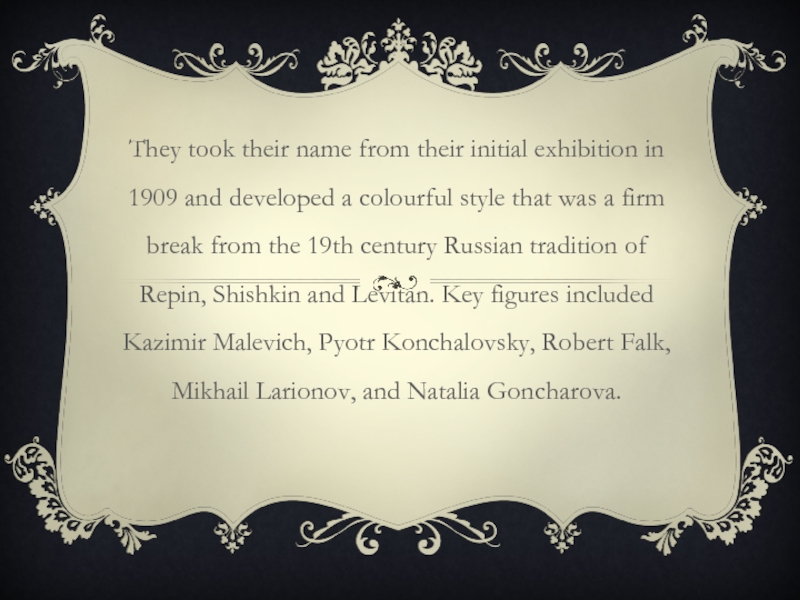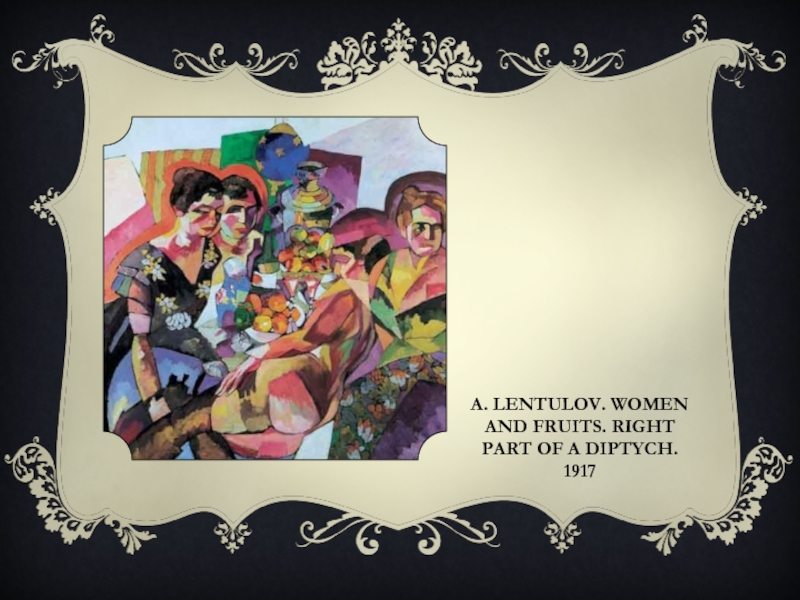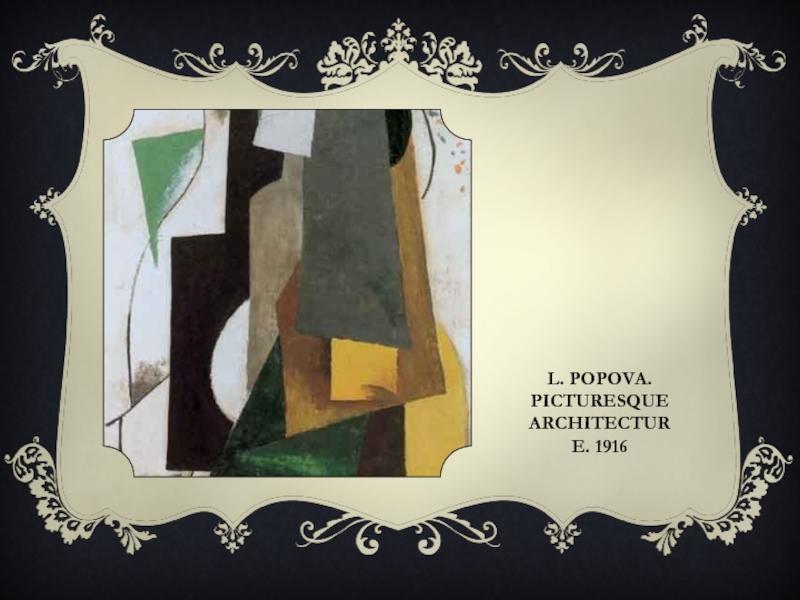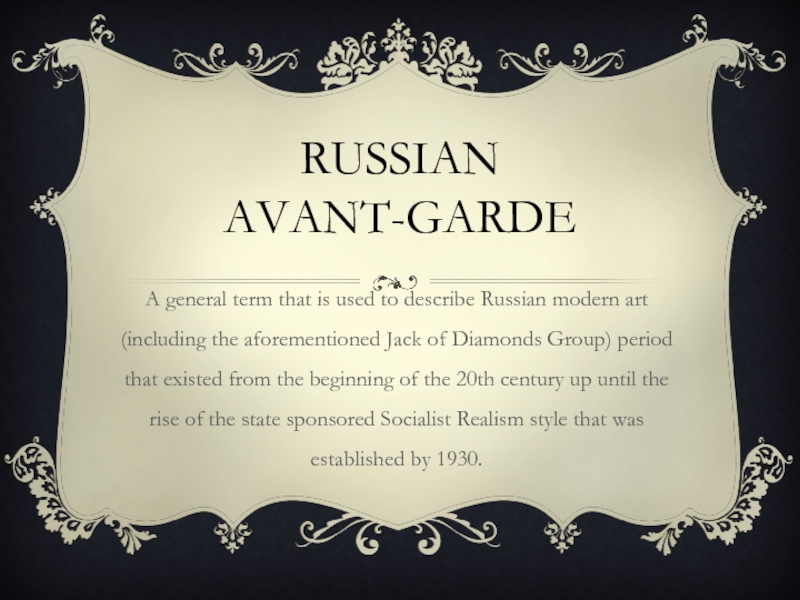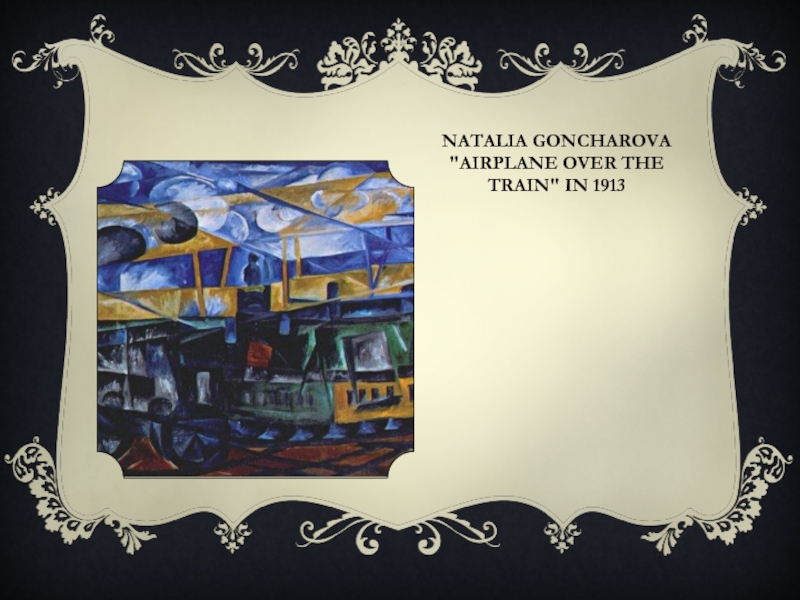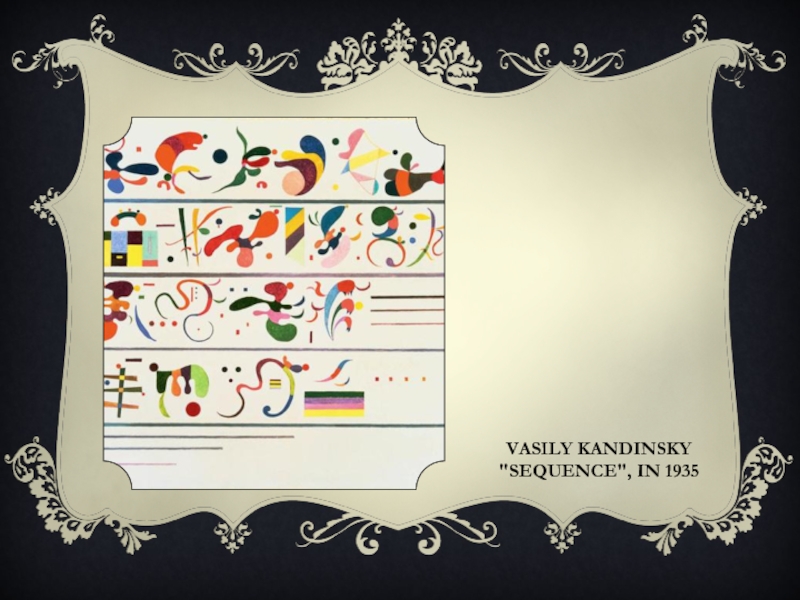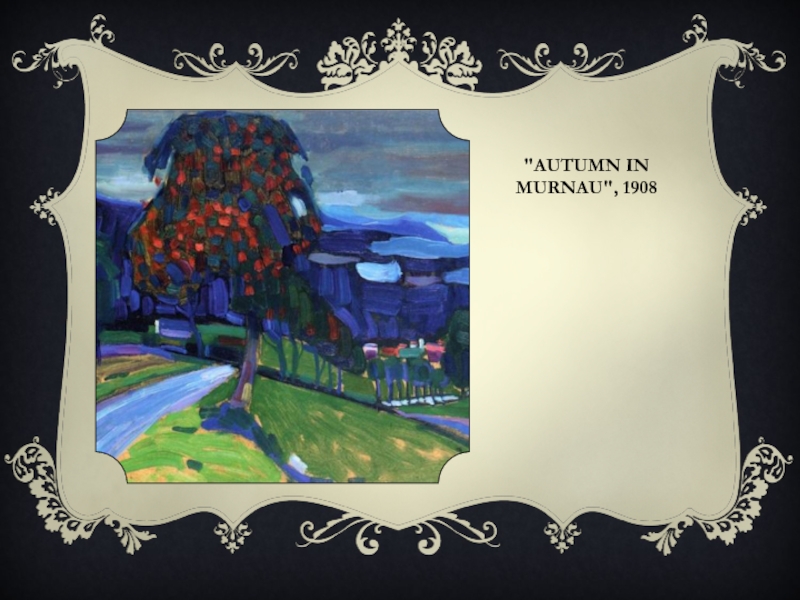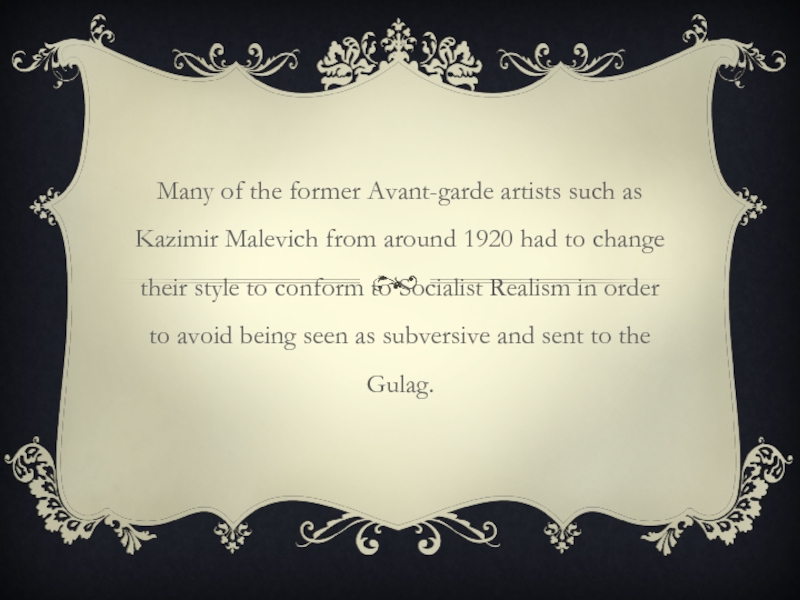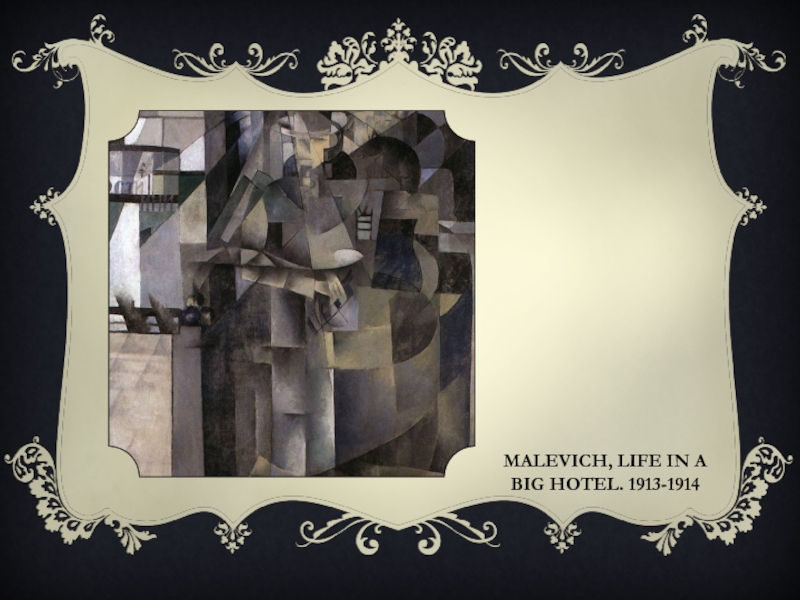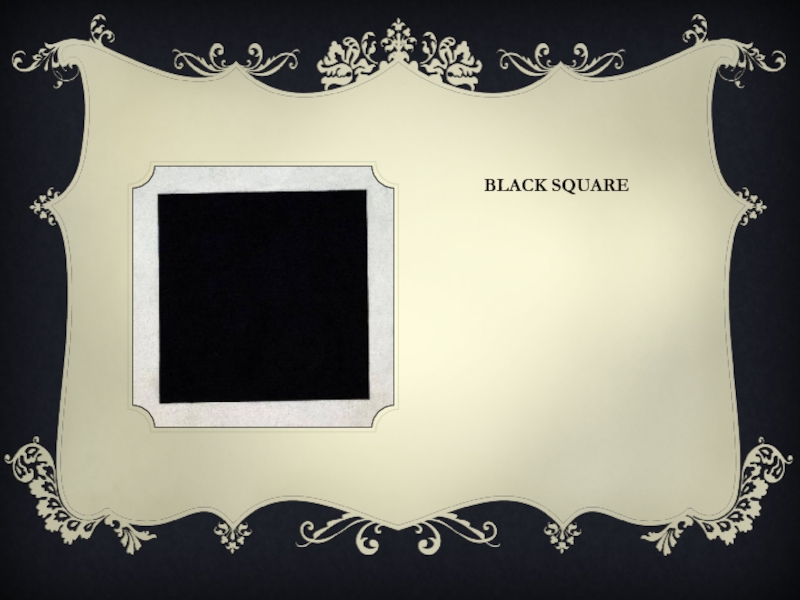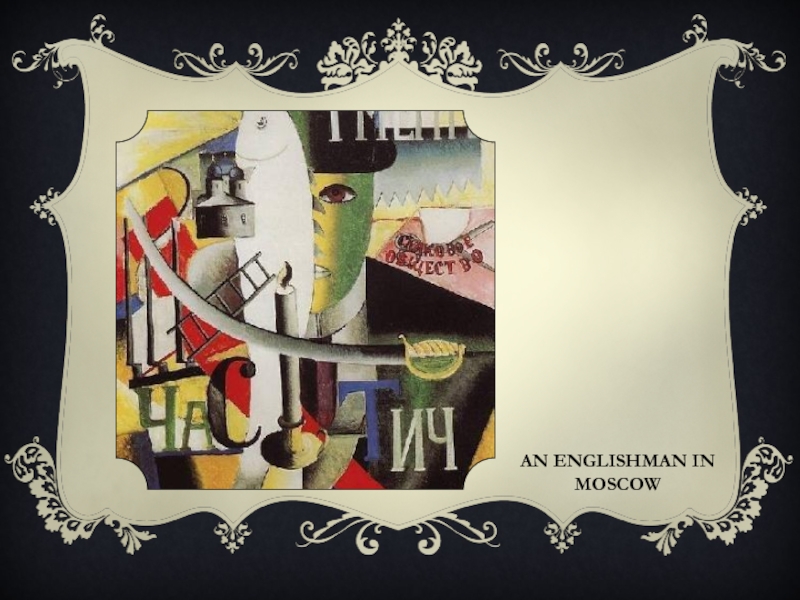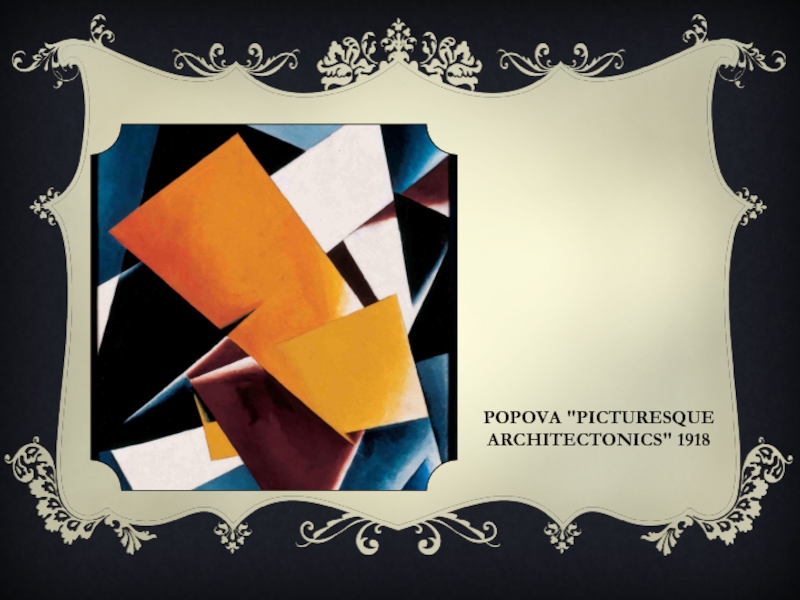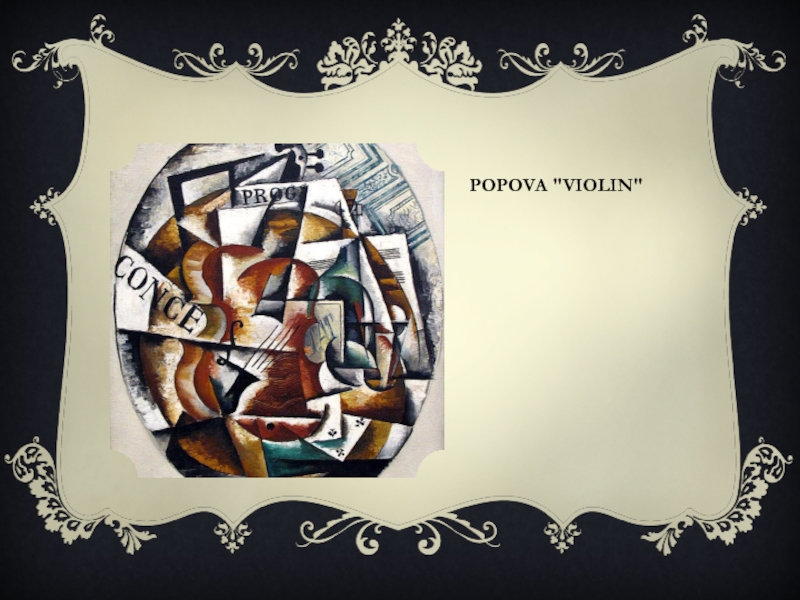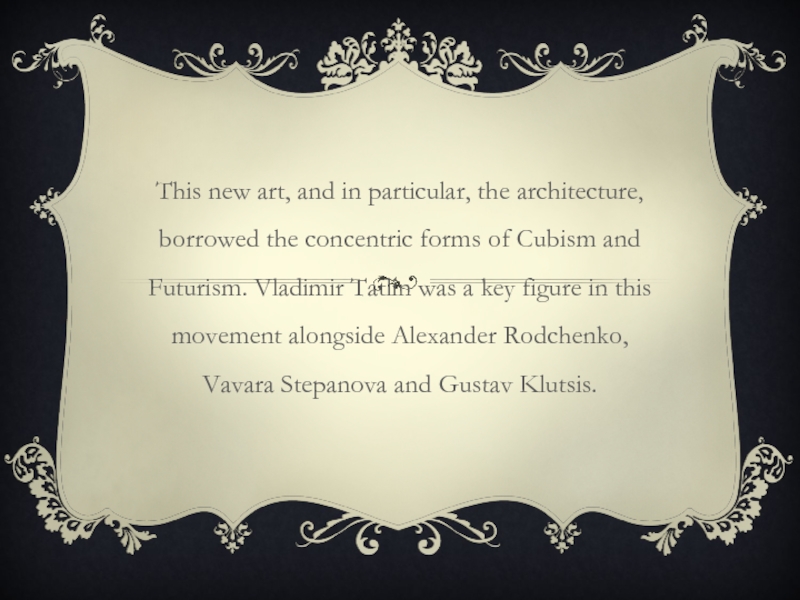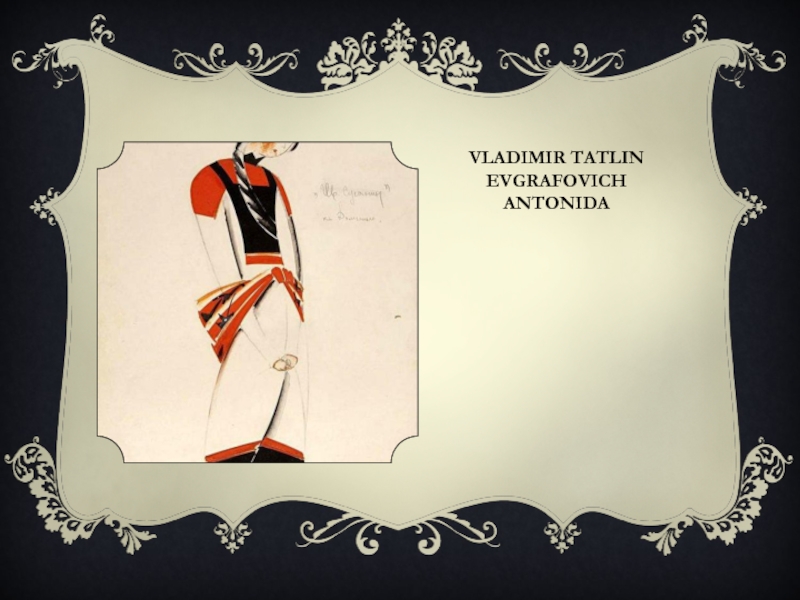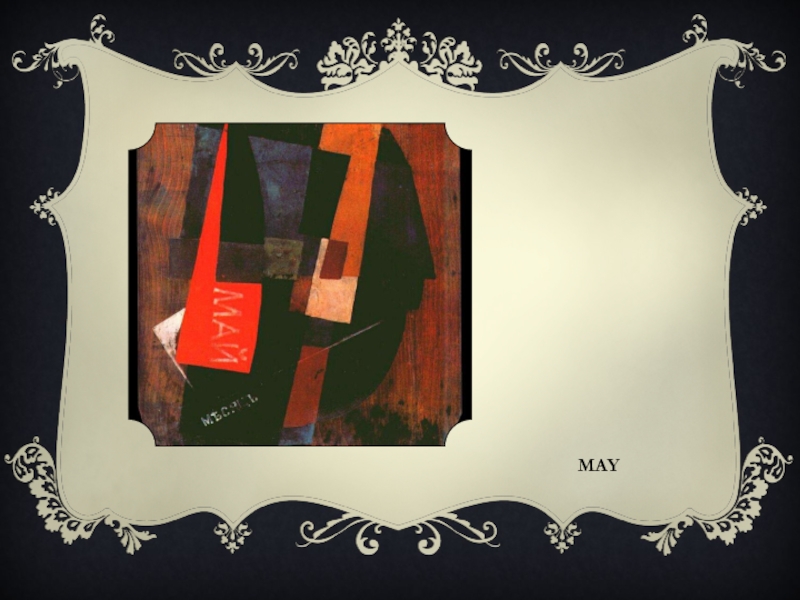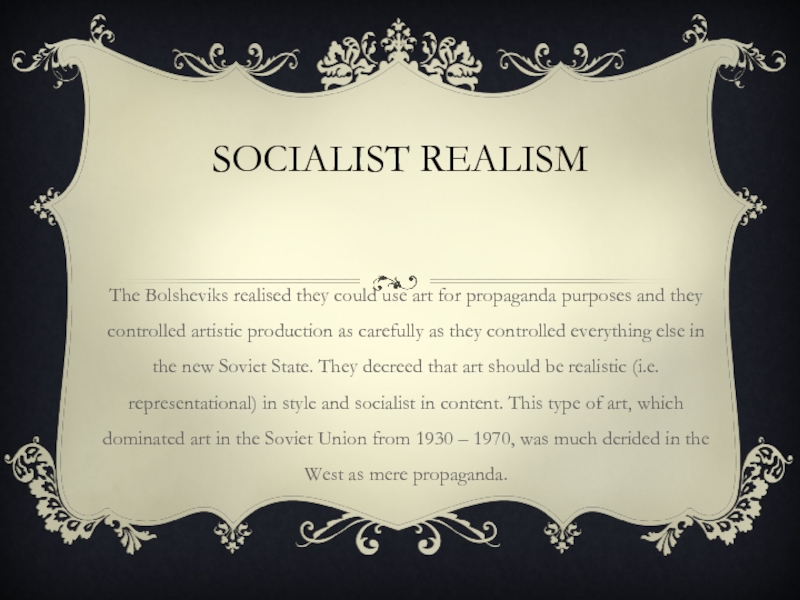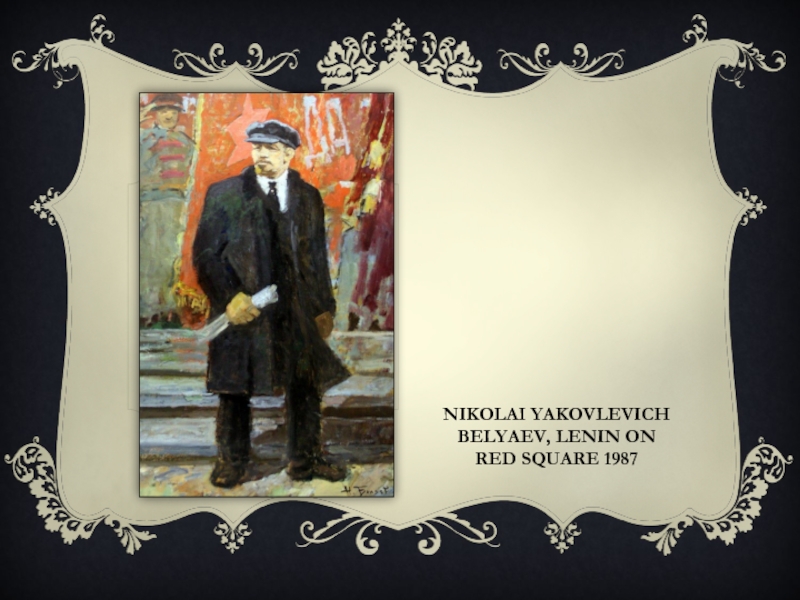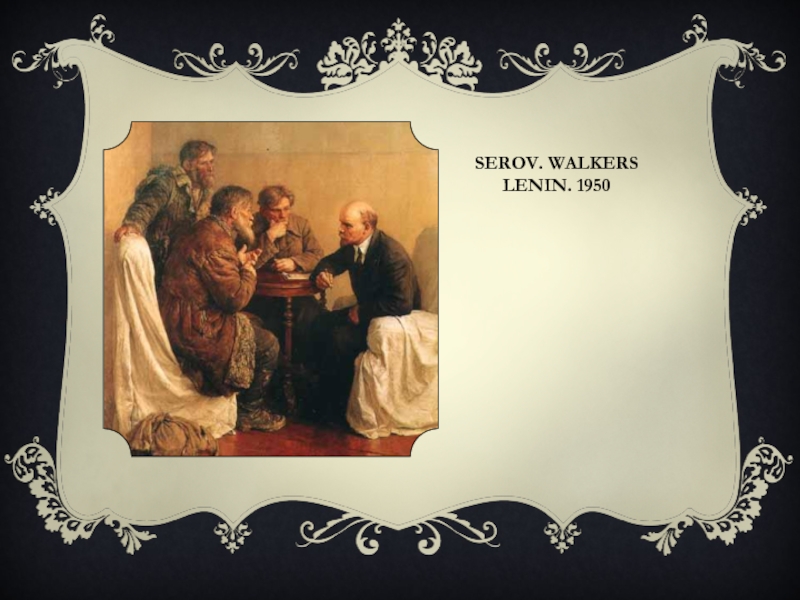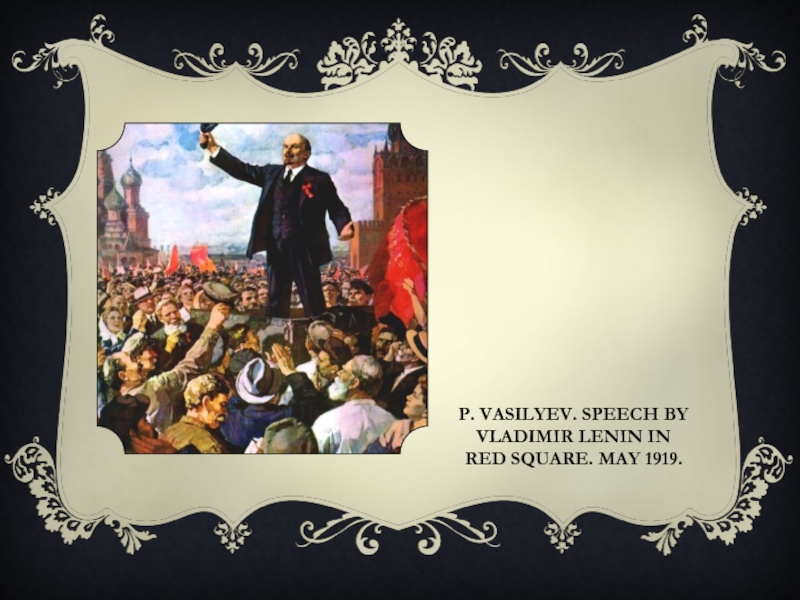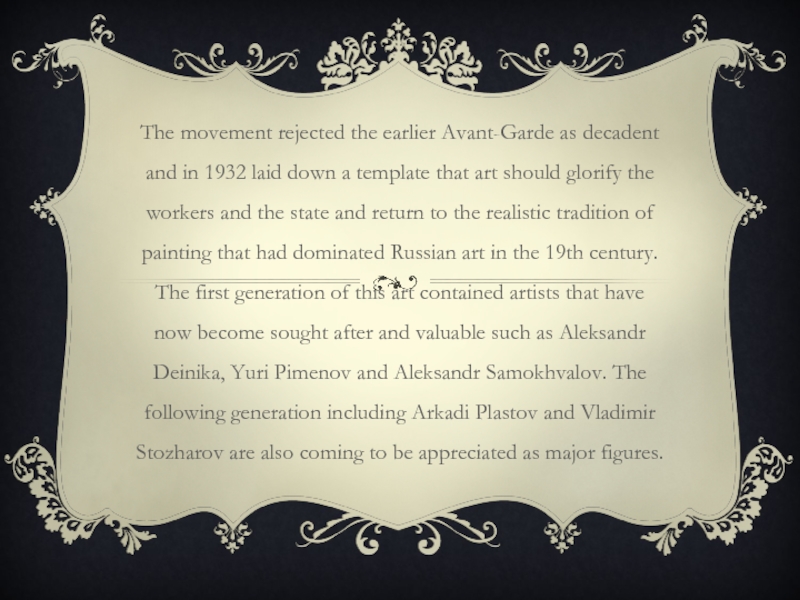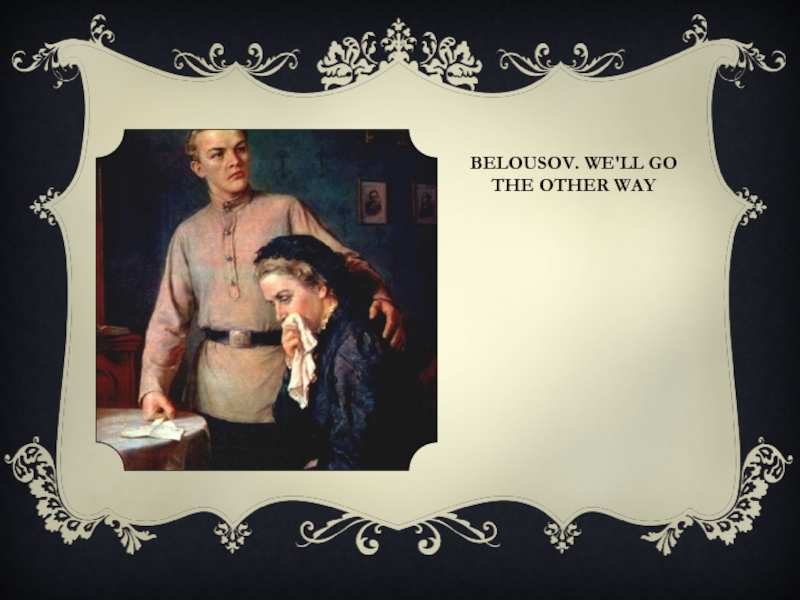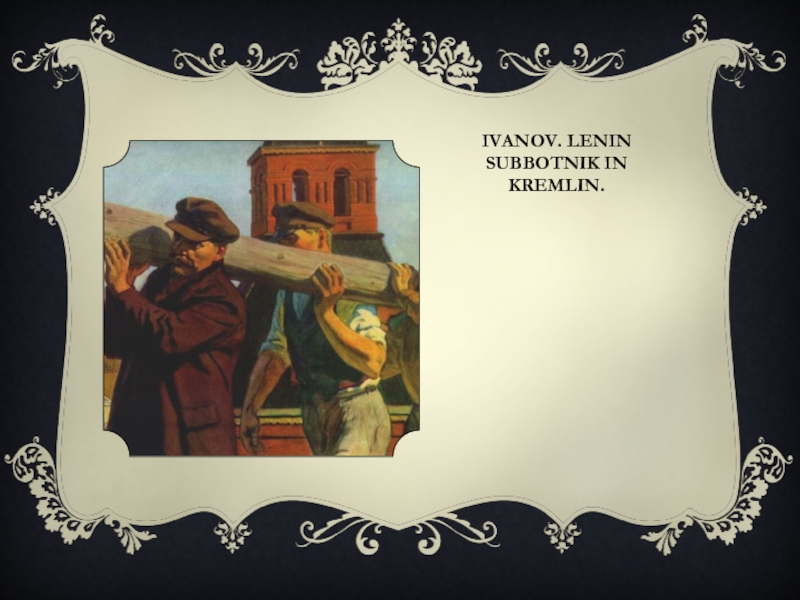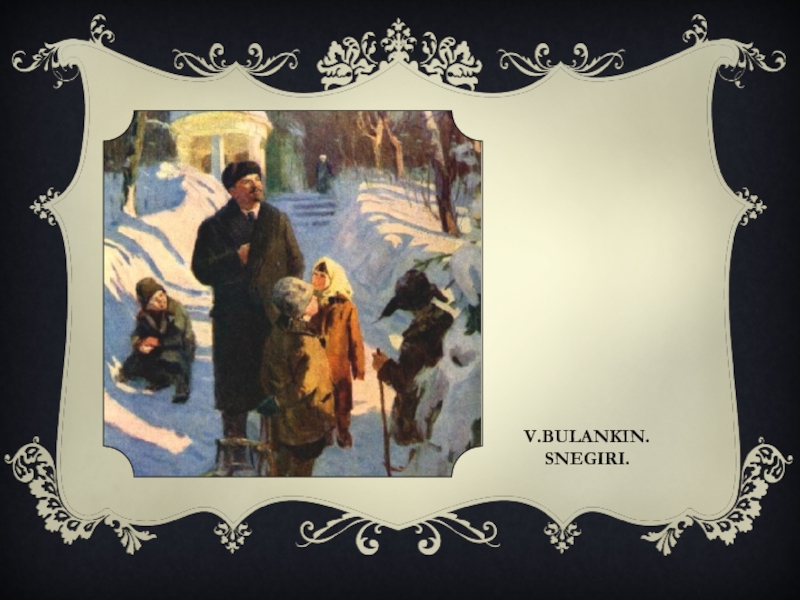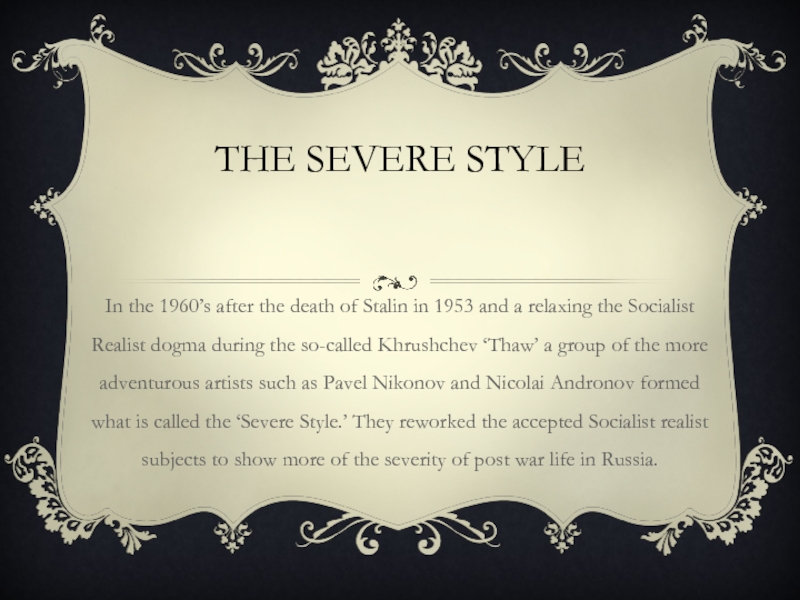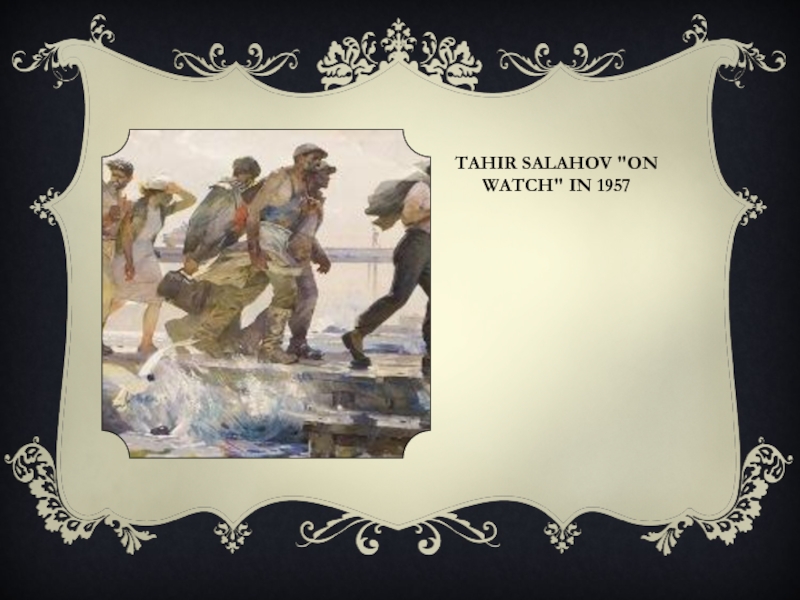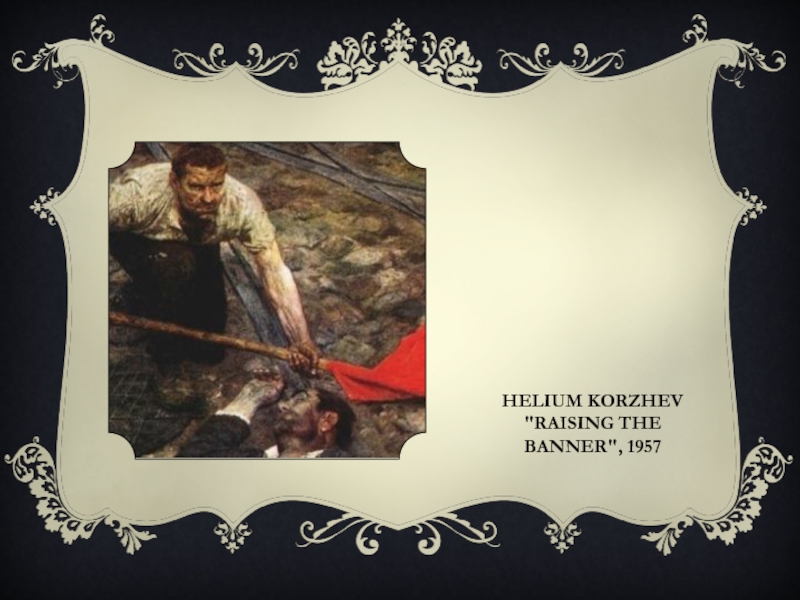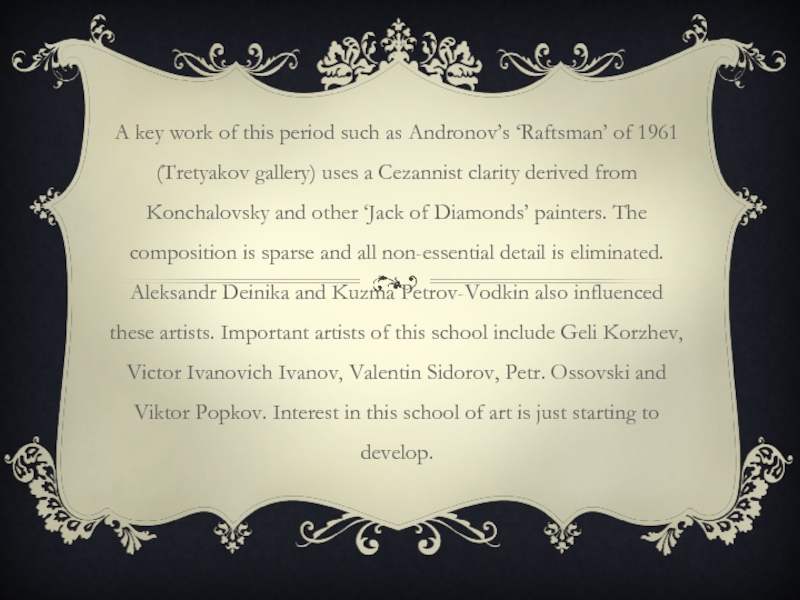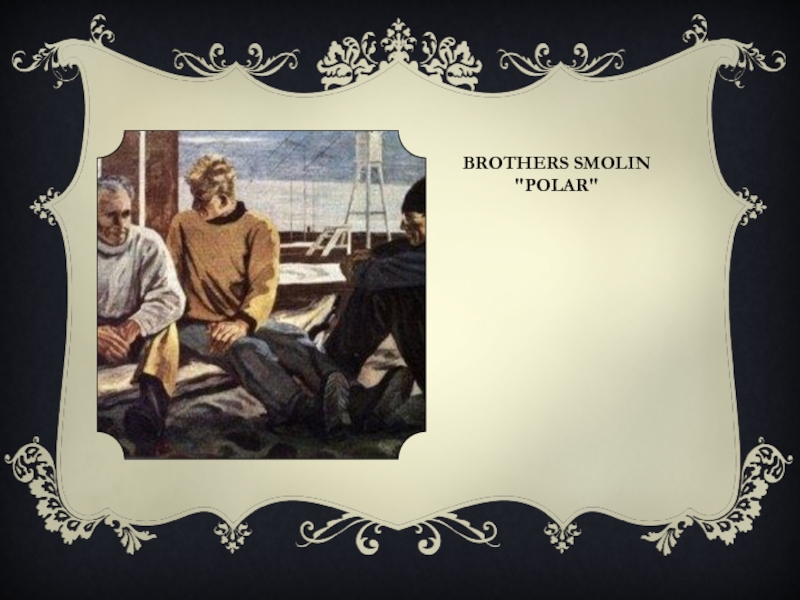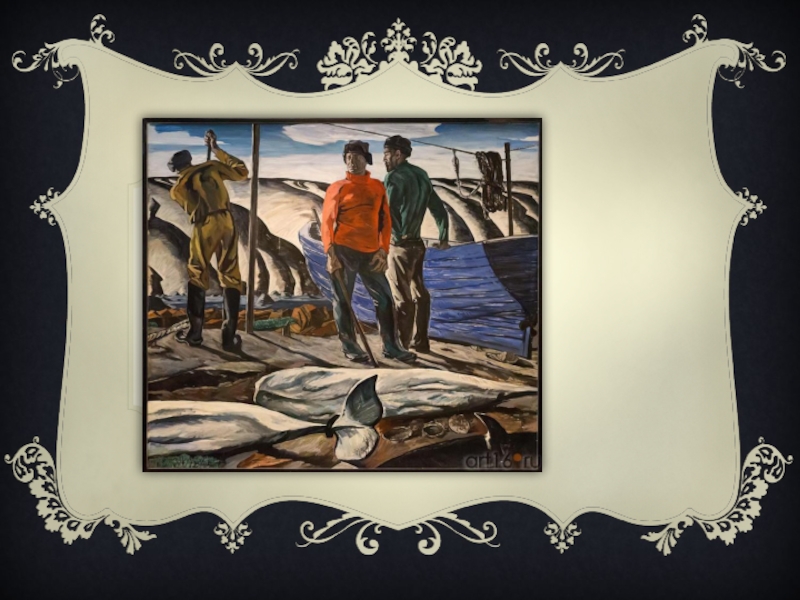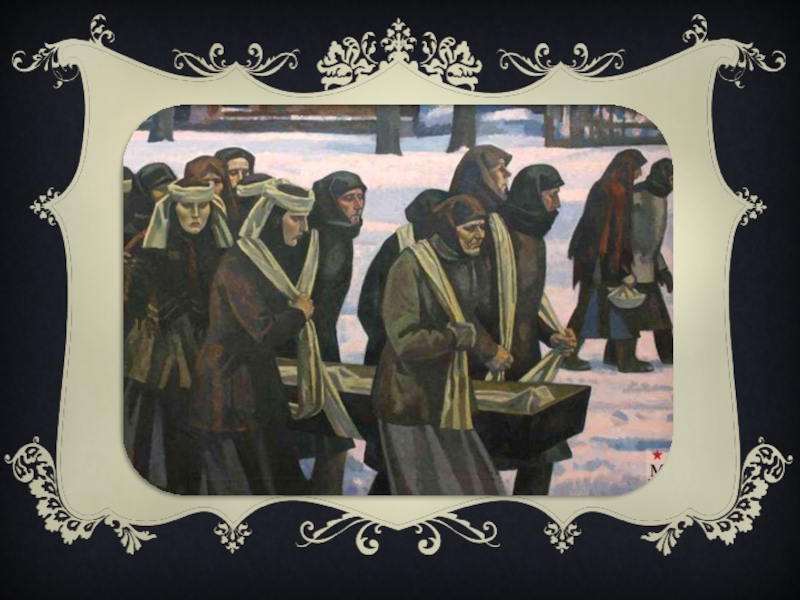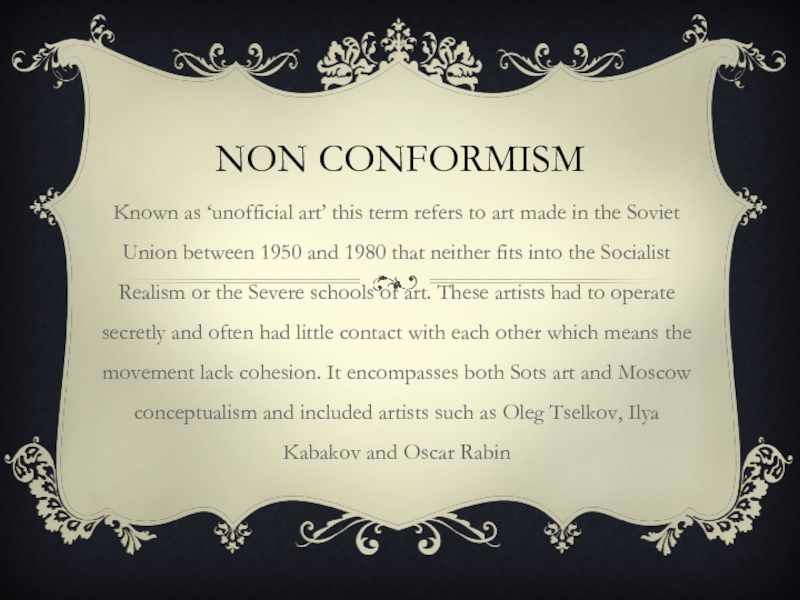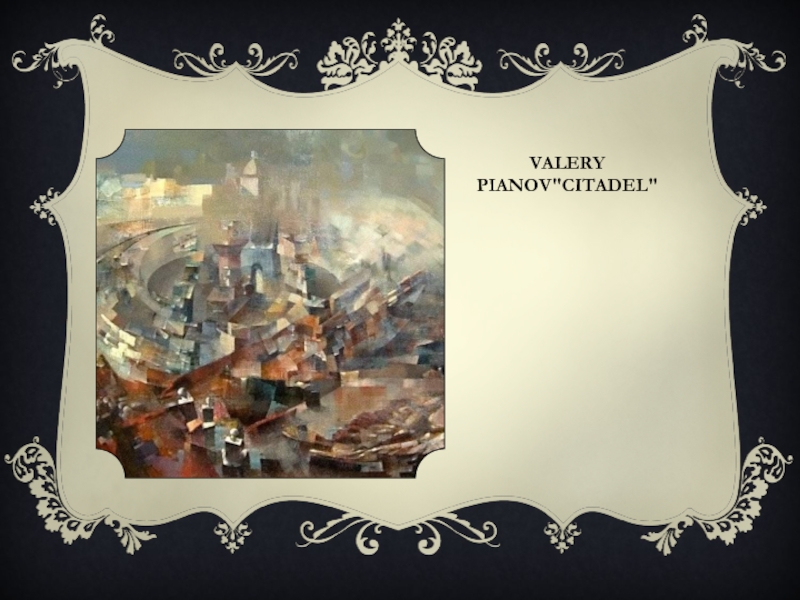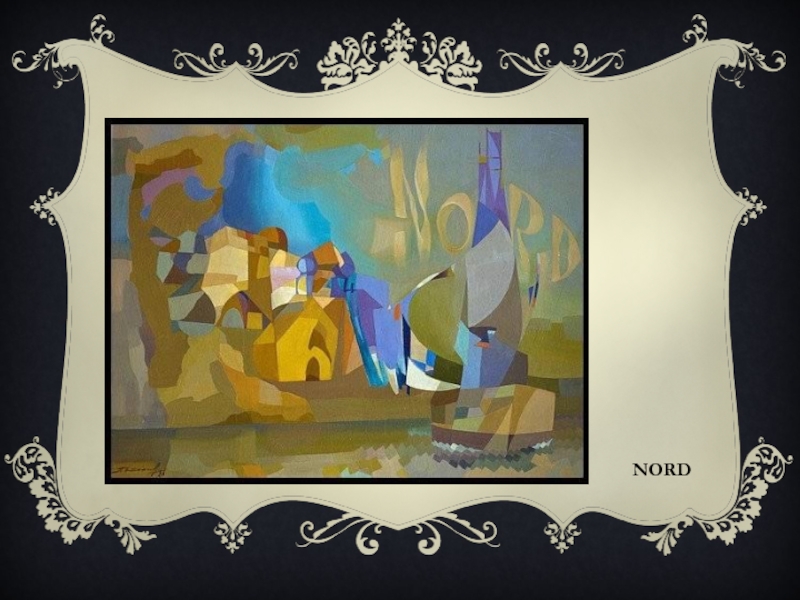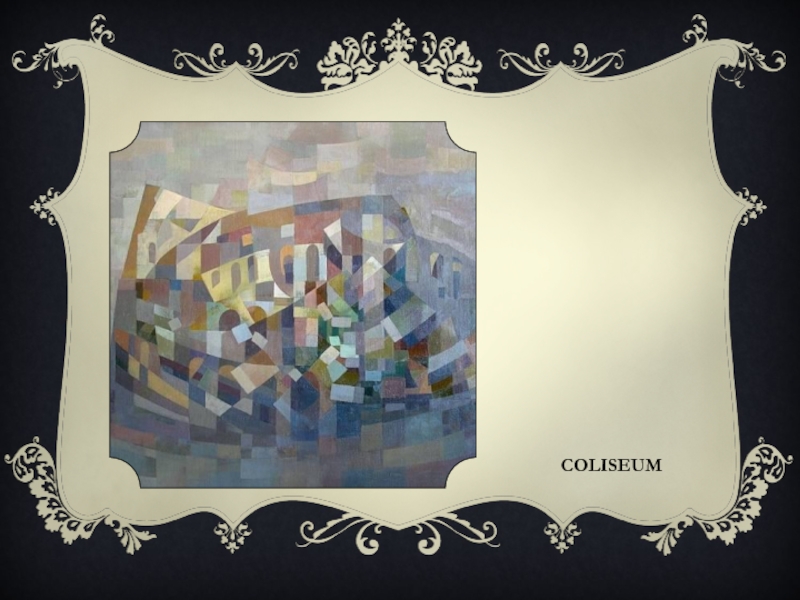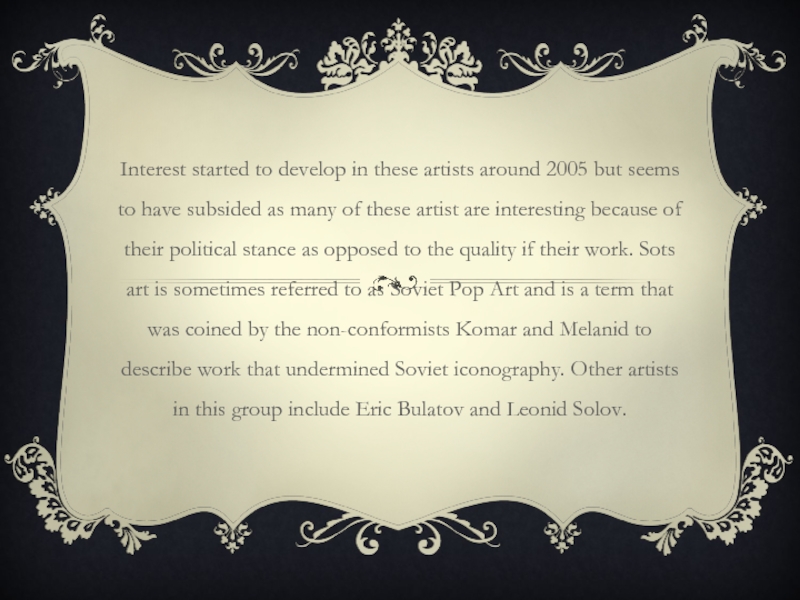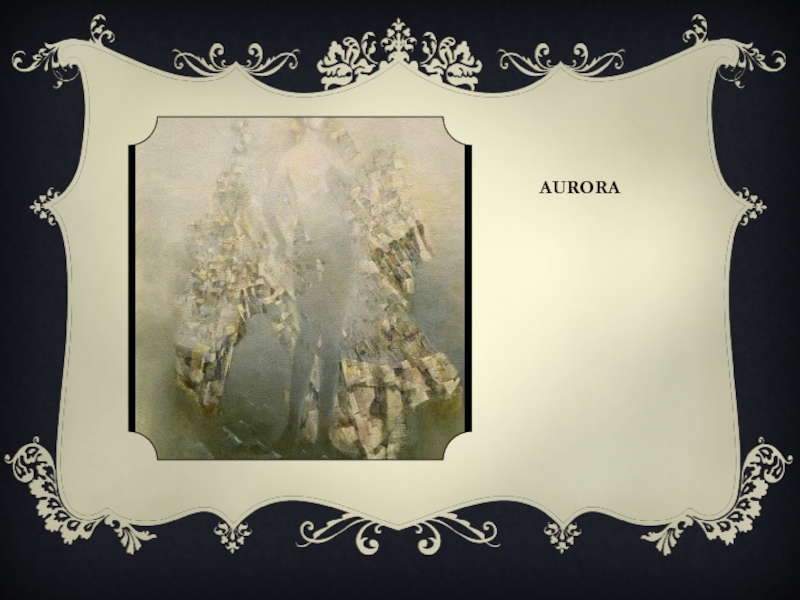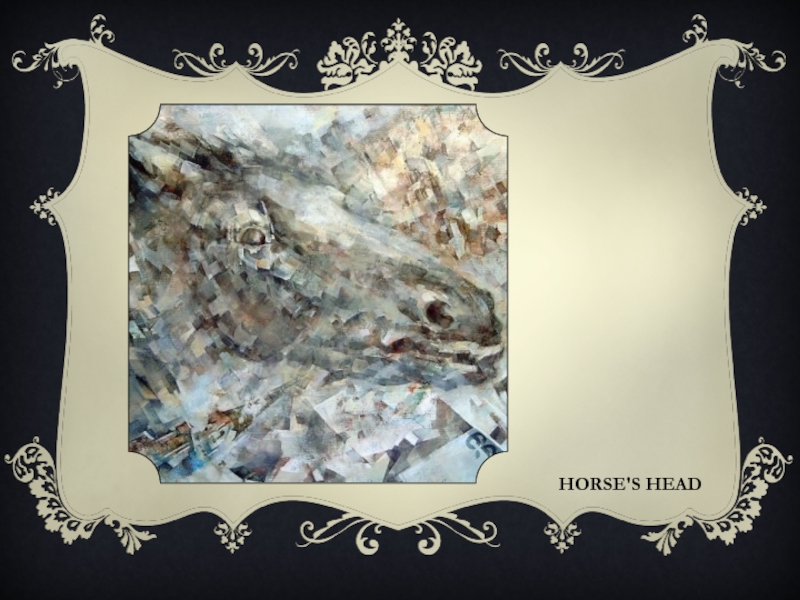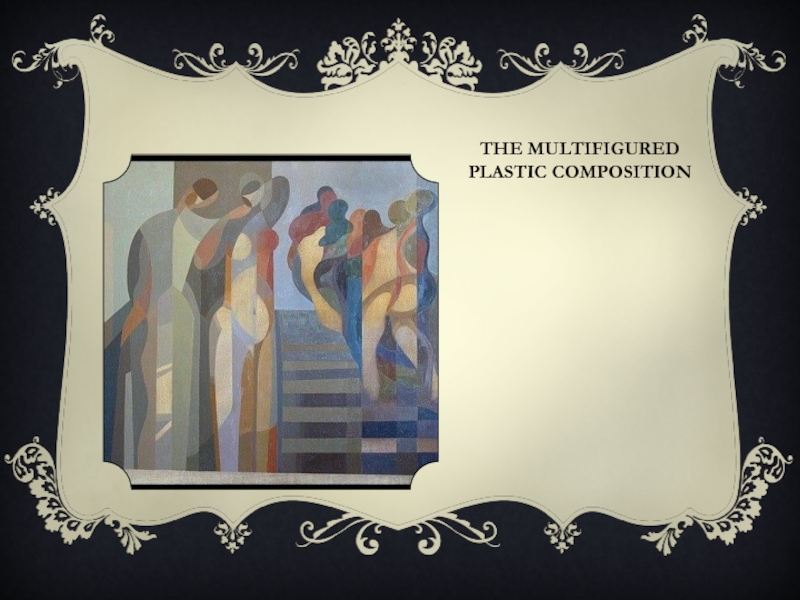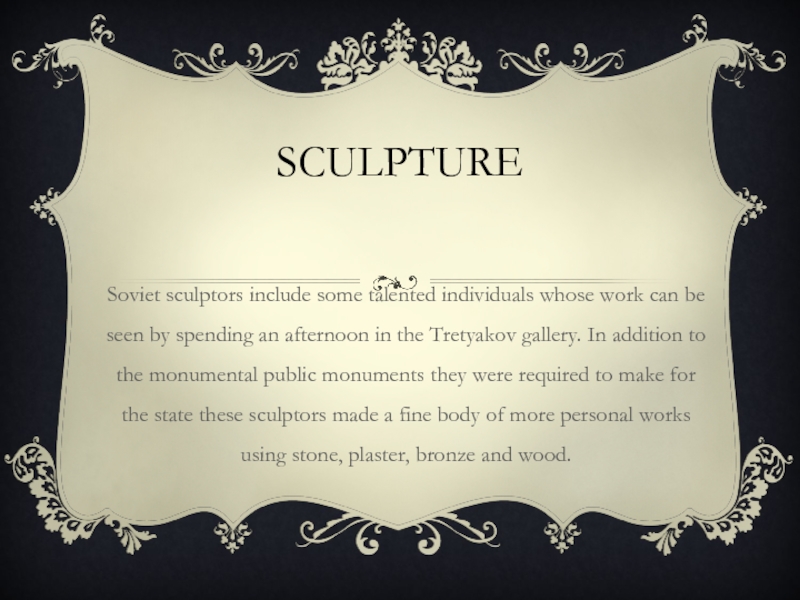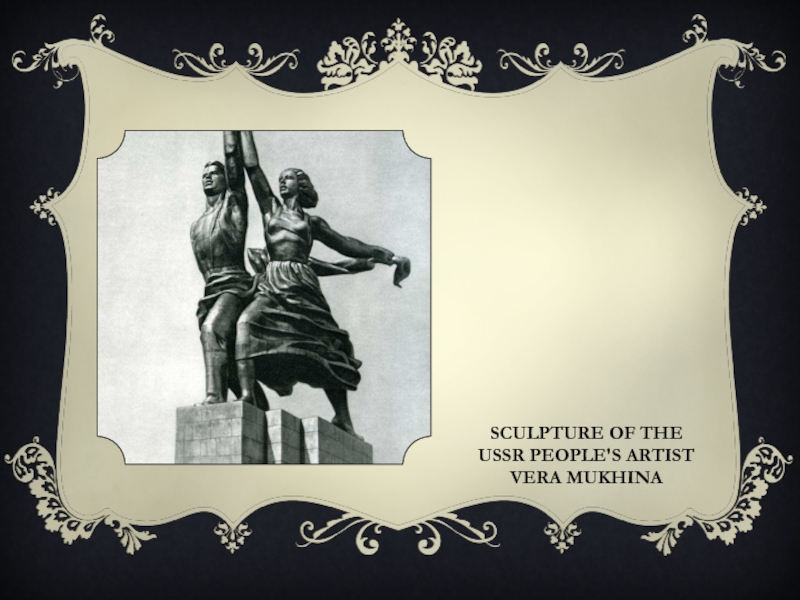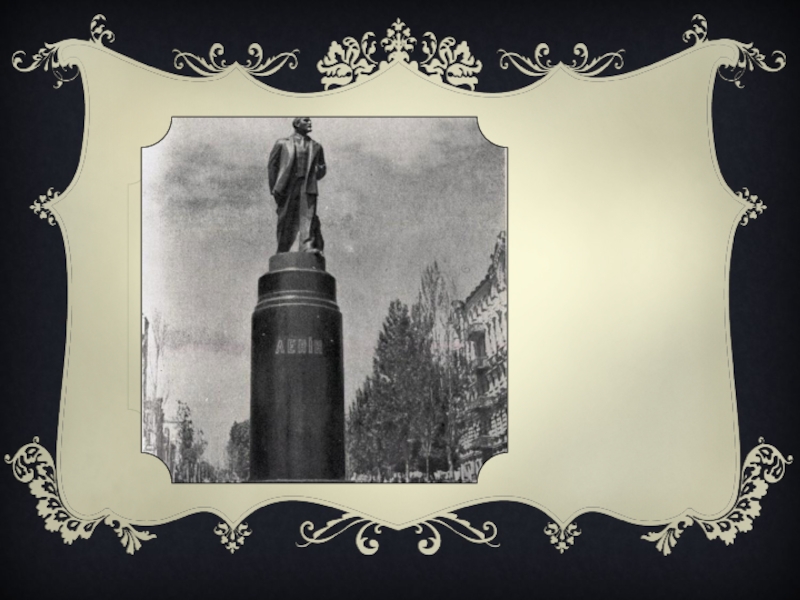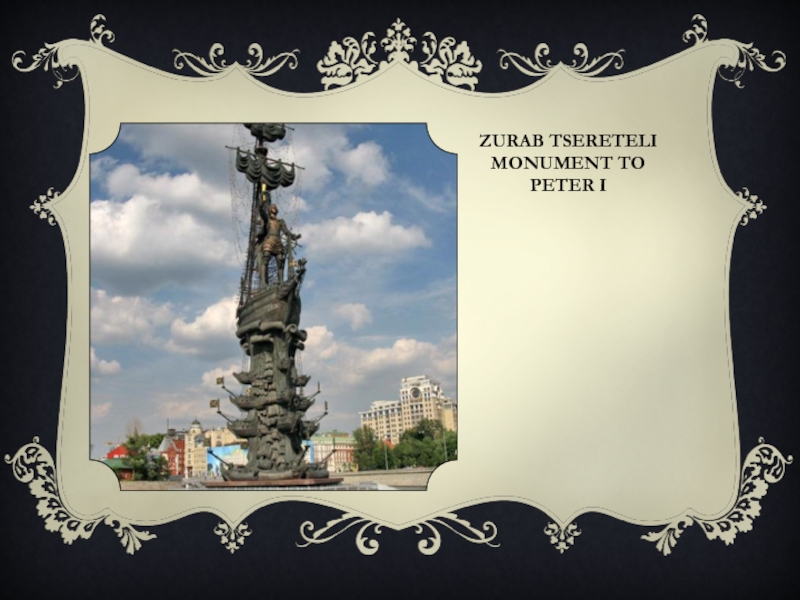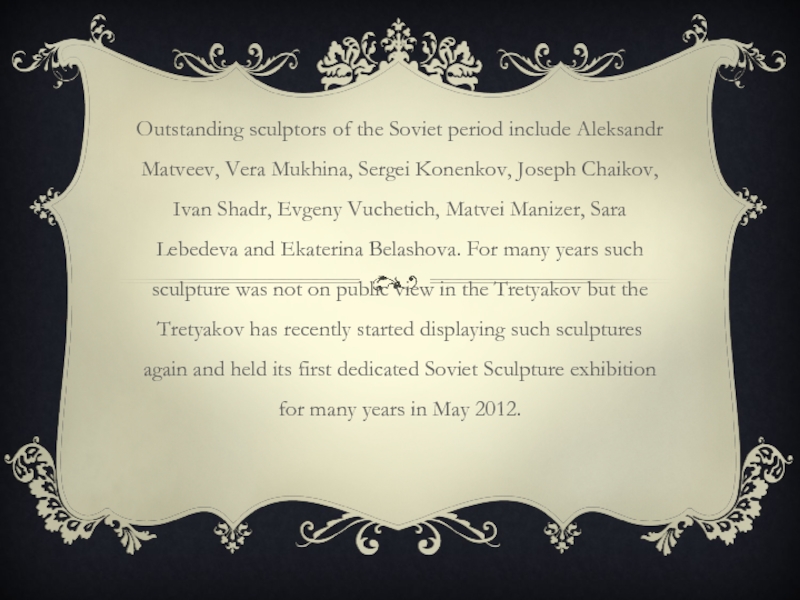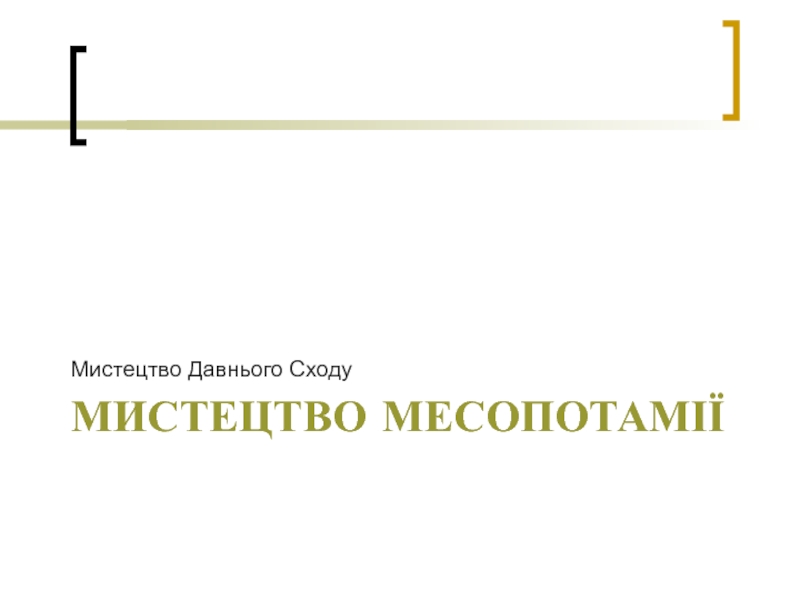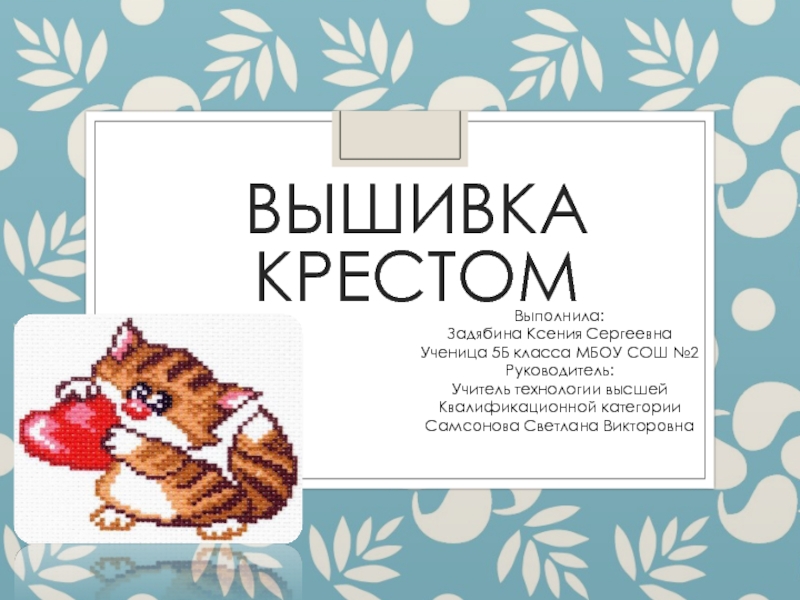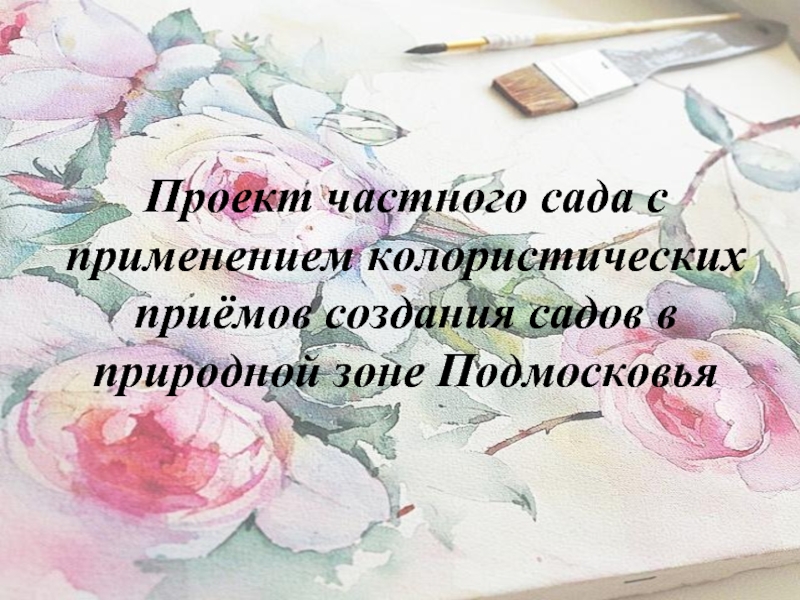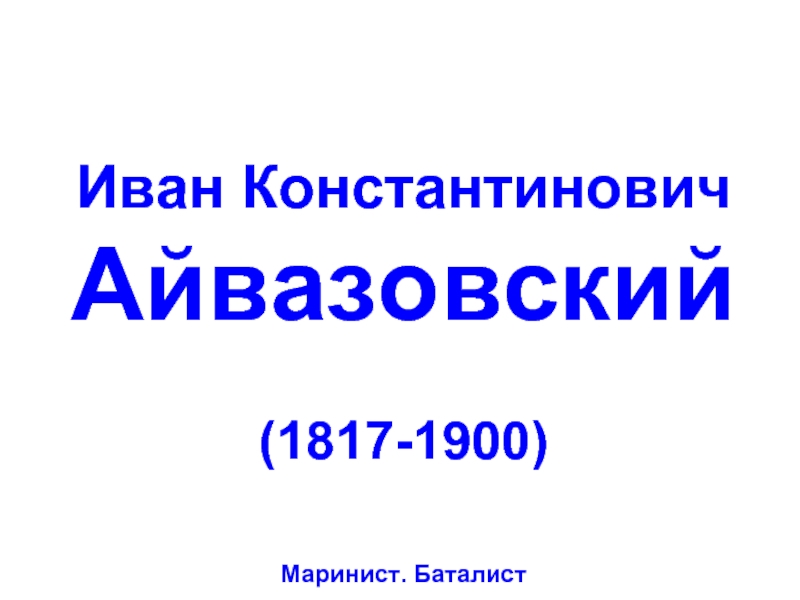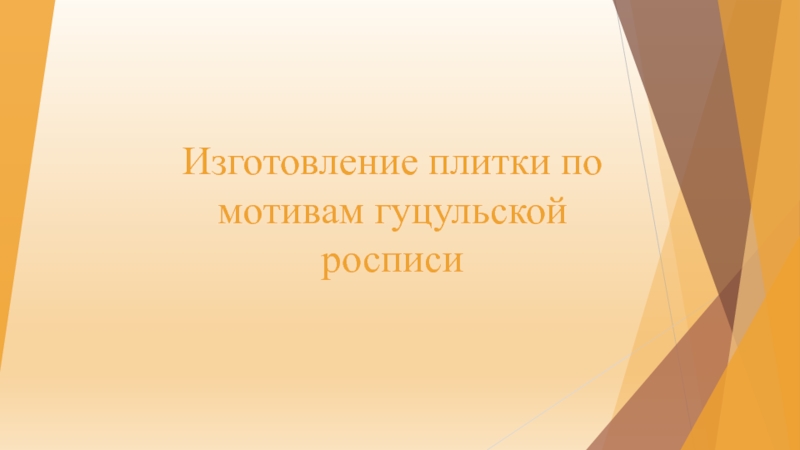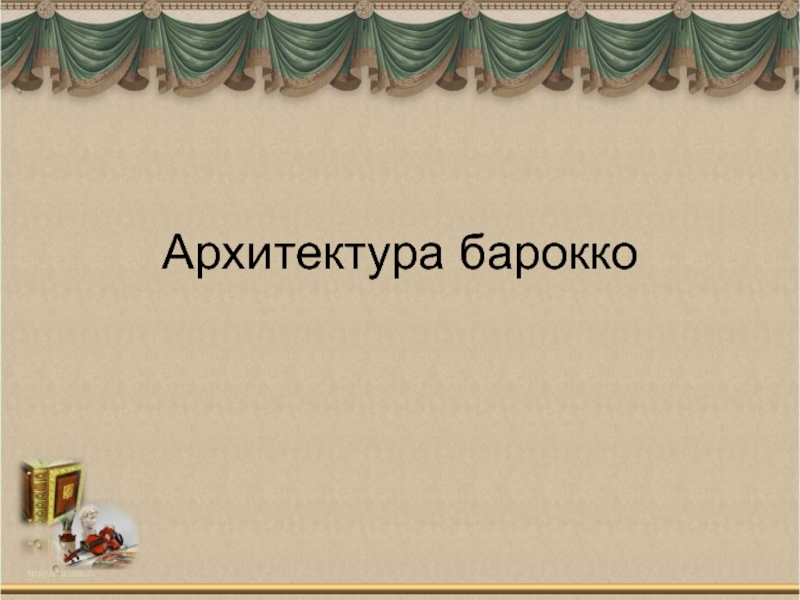- Главная
- Разное
- Дизайн
- Бизнес и предпринимательство
- Аналитика
- Образование
- Развлечения
- Красота и здоровье
- Финансы
- Государство
- Путешествия
- Спорт
- Недвижимость
- Армия
- Графика
- Культурология
- Еда и кулинария
- Лингвистика
- Английский язык
- Астрономия
- Алгебра
- Биология
- География
- Детские презентации
- Информатика
- История
- Литература
- Маркетинг
- Математика
- Медицина
- Менеджмент
- Музыка
- МХК
- Немецкий язык
- ОБЖ
- Обществознание
- Окружающий мир
- Педагогика
- Русский язык
- Технология
- Физика
- Философия
- Химия
- Шаблоны, картинки для презентаций
- Экология
- Экономика
- Юриспруденция
Russian ART of the 20th century презентация
Содержание
- 1. Russian ART of the 20th century
- 2. INTRODUCTION Russian art of the 20th century is
- 3. JACK OF DIAMONDS A group of
- 4. K. MALEVICH. PORTRAIT OF M. V. MATYUSHIN. 1913
- 5. A. LENTULOV. BASIL. 1913
- 6. I. MASHKOV. THE CITY'S SKYLINE. 1911
- 7. They took their name from their initial
- 8. A. LENTULOV. WOMEN AND FRUITS. RIGHT PART OF A DIPTYCH. 1917
- 9. A. EXTER. THE CITY AT NIGHT. 1913.
- 10. L. POPOVA. PICTURESQUE ARCHITECTURE. 1916
- 11. RUSSIAN AVANT-GARDE A general term that is
- 12. NATALIA GONCHAROVA "AIRPLANE OVER THE TRAIN" IN 1913
- 13. VASILY KANDINSKY "SEQUENCE", IN 1935
- 14. "AUTUMN IN MURNAU", 1908
- 15. Many of the former Avant-garde artists such
- 16. MALEVICH, LIFE IN A BIG HOTEL. 1913-1914
- 17. BLACK SQUARE
- 18. AN ENGLISHMAN IN MOSCOW
- 19. CONSTRUCTIVISM The Avant-Garde incorporated painting, sculpture, photography
- 20. POPOVA L.S. "MAN + AIR + SPACE" IN 1912
- 21. POPOVA "PICTURESQUE ARCHITECTONICS" 1918
- 22. POPOVA "VIOLIN"
- 23. This new art, and in particular, the
- 24. VLADIMIR TATLIN EVGRAFOVICH ANTONIDA
- 25. MAY
- 26. GARDEN FLOWERS
- 27. SOCIALIST REALISM The Bolsheviks realised they could
- 28. NIKOLAI YAKOVLEVICH BELYAEV, LENIN ON RED SQUARE 1987
- 29. SEROV. WALKERS LENIN. 1950
- 30. P. VASILYEV. SPEECH BY VLADIMIR LENIN IN RED SQUARE. MAY 1919.
- 31. The movement rejected the earlier Avant-Garde as
- 32. BELOUSOV. WE'LL GO THE OTHER WAY
- 33. IVANOV. LENIN SUBBOTNIK IN KREMLIN.
- 34. V.BULANKIN. SNEGIRI.
- 35. THE SEVERE STYLE In the 1960’s after
- 36. TAHIR SALAHOV "ON WATCH" IN 1957
- 37. "YOU, HUMANITY", 1961
- 38. HELIUM KORZHEV "RAISING THE BANNER", 1957
- 39. A key work of this period such
- 40. BROTHERS SMOLIN "POLAR"
- 43. NON CONFORMISM Known as ‘unofficial art’ this
- 44. VALERY PIANOV"CITADEL"
- 45. NORD
- 46. COLISEUM
- 47. Interest started to develop in these artists
- 48. AURORA
- 49. HORSE'S HEAD
- 50. THE MULTIFIGURED PLASTIC COMPOSITION
- 51. SCULPTURE Soviet sculptors include some talented
- 52. SCULPTURE OF THE USSR PEOPLE'S ARTIST VERA MUKHINA
- 54. ZURAB TSERETELI MONUMENT TO PETER I
- 55. Outstanding sculptors of the Soviet period include
- 56. Thank you for your attention!!!
Слайд 2INTRODUCTION
Russian art of the 20th century is a many-layered topic and consists
of a variety of overlapping and sometimes competing groups and movements. Below we list and discuss some of the better-known movements of the Russian soviet era.
Слайд 3JACK OF DIAMONDS
A group of artists formed this movement in 1909
in Moscow and it is considered the first wave of the Russian Avant-Garde. Pre-revolutionary artists had no restriction on travel and most of them spent formative years in Paris where they fell under the influence of the French Post Impressionists and Cubism
Слайд 7They took their name from their initial exhibition in 1909 and
developed a colourful style that was a firm break from the 19th century Russian tradition of Repin, Shishkin and Levitan. Key figures included Kazimir Malevich, Pyotr Konchalovsky, Robert Falk, Mikhail Larionov, and Natalia Goncharova.
Слайд 11RUSSIAN AVANT-GARDE
A general term that is used to describe Russian modern
art (including the aforementioned Jack of Diamonds Group) period that existed from the beginning of the 20th century up until the rise of the state sponsored Socialist Realism style that was established by 1930.
Слайд 15Many of the former Avant-garde artists such as Kazimir Malevich from
around 1920 had to change their style to conform to Socialist Realism in order to avoid being seen as subversive and sent to the Gulag.
Слайд 19CONSTRUCTIVISM
The Avant-Garde incorporated painting, sculpture, photography and architecture. In line with
Bolshevik thinking after the revolution of 1918, Constructivists rejected the idea of autonomous art in favors of art with a social purpose.
Слайд 23This new art, and in particular, the architecture, borrowed the concentric
forms of Cubism and Futurism. Vladimir Tatlin was a key figure in this movement alongside Alexander Rodchenko, Vavara Stepanova and Gustav Klutsis.
Слайд 27SOCIALIST REALISM
The Bolsheviks realised they could use art for propaganda purposes
and they controlled artistic production as carefully as they controlled everything else in the new Soviet State. They decreed that art should be realistic (i.e. representational) in style and socialist in content. This type of art, which dominated art in the Soviet Union from 1930 – 1970, was much derided in the West as mere propaganda.
Слайд 31The movement rejected the earlier Avant-Garde as decadent and in 1932
laid down a template that art should glorify the workers and the state and return to the realistic tradition of painting that had dominated Russian art in the 19th century. The first generation of this art contained artists that have now become sought after and valuable such as Aleksandr Deinika, Yuri Pimenov and Aleksandr Samokhvalov. The following generation including Arkadi Plastov and Vladimir Stozharov are also coming to be appreciated as major figures.
Слайд 35THE SEVERE STYLE
In the 1960’s after the death of Stalin in
1953 and a relaxing the Socialist Realist dogma during the so-called Khrushchev ‘Thaw’ a group of the more adventurous artists such as Pavel Nikonov and Nicolai Andronov formed what is called the ‘Severe Style.’ They reworked the accepted Socialist realist subjects to show more of the severity of post war life in Russia.
Слайд 39A key work of this period such as Andronov’s ‘Raftsman’ of
1961 (Tretyakov gallery) uses a Cezannist clarity derived from Konchalovsky and other ‘Jack of Diamonds’ painters. The composition is sparse and all non-essential detail is eliminated. Aleksandr Deinika and Kuzma Petrov-Vodkin also influenced these artists. Important artists of this school include Geli Korzhev, Victor Ivanovich Ivanov, Valentin Sidorov, Petr. Ossovski and Viktor Popkov. Interest in this school of art is just starting to develop.
Слайд 43NON CONFORMISM
Known as ‘unofficial art’ this term refers to art made
in the Soviet Union between 1950 and 1980 that neither fits into the Socialist Realism or the Severe schools of art. These artists had to operate secretly and often had little contact with each other which means the movement lack cohesion. It encompasses both Sots art and Moscow conceptualism and included artists such as Oleg Tselkov, Ilya Kabakov and Oscar Rabin
Слайд 47Interest started to develop in these artists around 2005 but seems
to have subsided as many of these artist are interesting because of their political stance as opposed to the quality if their work. Sots art is sometimes referred to as Soviet Pop Art and is a term that was coined by the non-conformists Komar and Melanid to describe work that undermined Soviet iconography. Other artists in this group include Eric Bulatov and Leonid Solov.
Слайд 51SCULPTURE
Soviet sculptors include some talented individuals whose work can be seen
by spending an afternoon in the Tretyakov gallery. In addition to the monumental public monuments they were required to make for the state these sculptors made a fine body of more personal works using stone, plaster, bronze and wood.
Слайд 55Outstanding sculptors of the Soviet period include Aleksandr Matveev, Vera Mukhina,
Sergei Konenkov, Joseph Chaikov, Ivan Shadr, Evgeny Vuchetich, Matvei Manizer, Sara Lebedeva and Ekaterina Belashova. For many years such sculpture was not on public view in the Tretyakov but the Tretyakov has recently started displaying such sculptures again and held its first dedicated Soviet Sculpture exhibition for many years in May 2012.
